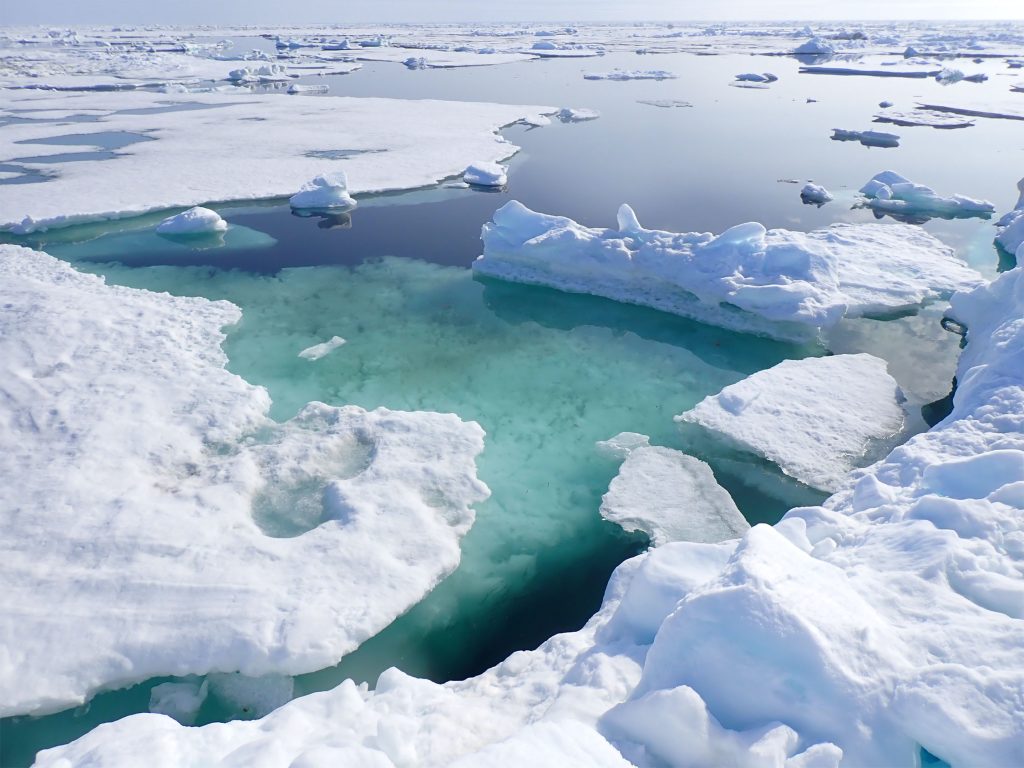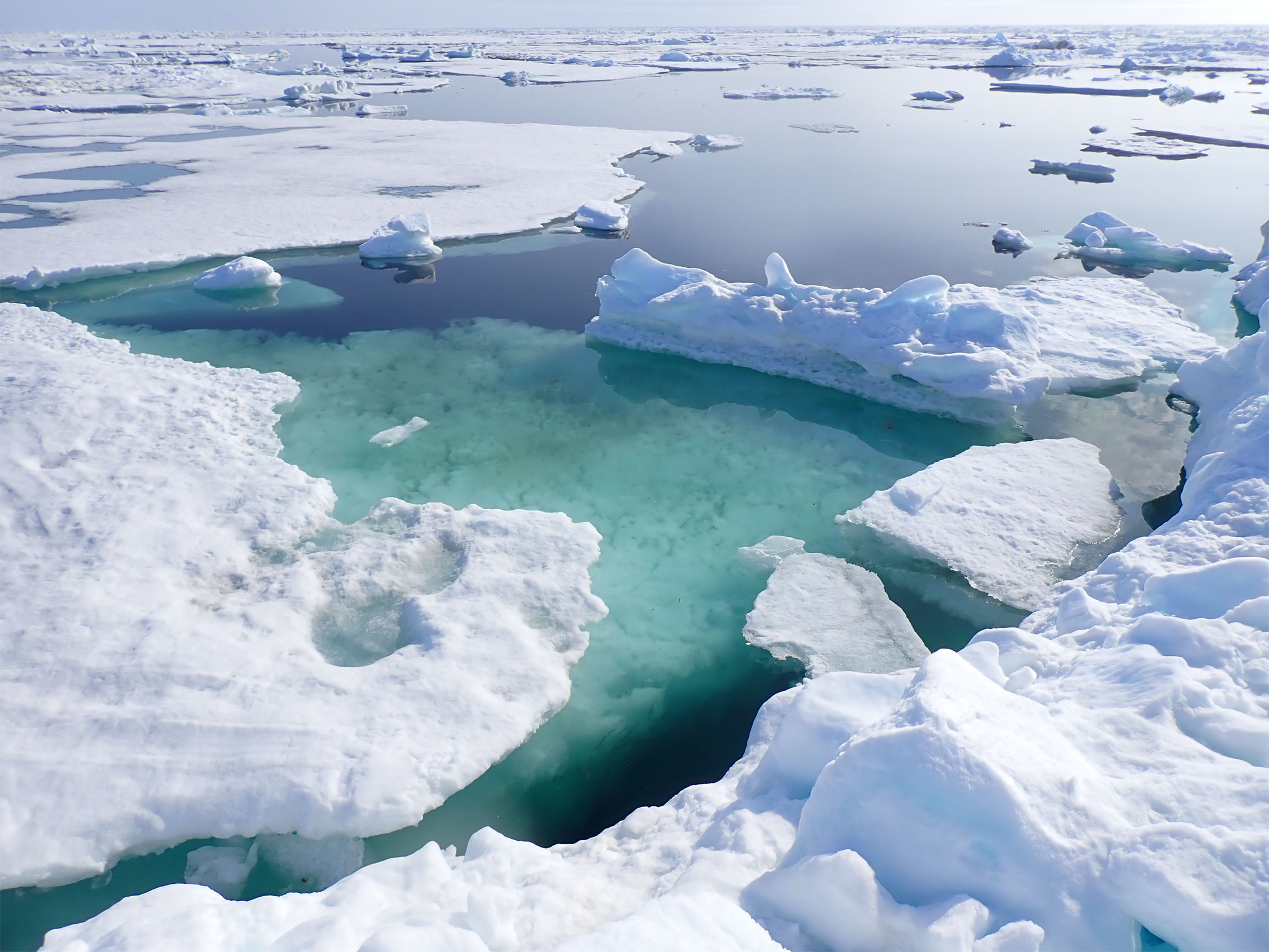
Researchers Create Technique to Enhance Thickness of Arctic Sea Ice

### Real Ice: A Guiding Light in an Age of Climate Change
As headlines highlighting severe climate calamities frequently capture public attention, it might seem that optimism is in short supply, particularly concerning our planet’s glaciers and polar ice. The [World Glacier Monitoring Service](https://www.climate.gov/news-features/understanding-climate/climate-change-mountain-glaciers) reports that 2023 marked the 36th year in a row with a global net loss of ice from glaciers. Furthermore, unprecedented temperatures led to [Greenland’s third most severe melting season](https://nsidc.org/ice-sheets-today/analyses/antarctic-melt-season-fast-start-greenland-2023-melt-season-review), while Swiss glaciers faced an alarming [4% reduction in volume](https://scnat.ch/en/uuid/i/b8d5798e-a75e-5a7d-a858-f7a6613524ed-Two_catastrophic_years_obliterate_10_of_Swiss_glacier_volume) over a two-year span. The status of Arctic and global ice sheets is indeed worrying.
Yet, amidst these disheartening numbers, there might be a glimmer of hope emerging from an unexpected avenue: groundbreaking Arctic ice-thickening technology developed by the UK-based start-up *Real Ice*. Their innovative strategy could serve as a vital resource in combating ice melt, potentially delaying the most severe repercussions of climate change and giving humanity additional time to shift towards sustainable practices.
#### The Danger: A “Blue Ocean Event”
A primary driver behind initiatives like Real Ice is the imminent risk posed by a situation known as a “blue ocean event.” This event refers to a scenario where summer thawing leads to the complete disappearance of Arctic sea ice, resulting in open, ice-free waters. This outcome could trigger numerous feedback loops—such as dark ocean waters absorbing more sunlight rather than reflecting it—that would intensify global warming and disrupt climate systems worldwide.
Without Arctic ice to maintain temperature equilibrium, scientists forecast catastrophic outcomes: rising sea levels, warmer ocean waters, an uptick in extreme weather events, and further disturbances to the fragile ecosystems within the Arctic region. Given that warming in the Arctic is happening at rates up to four times higher than the global average, reversing or postponing an ice-free Arctic must become a critical scientific focus.
#### The Real Ice Approach: Combating an Ice-Free Arctic
Established in 2019, Real Ice is a UK-based startup dedicated to tackling this dire scenario. In partnership with leading research institutions such as the [Centre for Climate Repair at the University of Cambridge](https://www.climaterepair.cam.ac.uk/) and other global climate organizations, Real Ice is making strides in ice conservation through its flagship technology, *AquaFreezing*.
The AquaFreezing technique reuses seawater to generate new ice layers, powered entirely by zero-emission renewable energy through straightforward saltwater pumping systems. Here’s a breakdown of the process:
1. **Water Pumping**: Water is drawn from beneath the sea ice and brought to the surface.
2. **Freezing Process**: Once it reaches the surface, the water is allowed to freeze naturally in the frigid Arctic air.
3. **Ice Accumulation**: As the water freezes, it creates new ice layers on the surface and encourages additional natural ice formation from below, fortifying and thickening the ice sheet.
In addition to merely enhancing ice levels, preliminary findings indicate that this method could have a more extensive impact: slowing the melting rate during critical summer months.
#### Promising Field Trials
In 2022, Real Ice carried out its first large-scale field trials in the Canadian Arctic in collaboration with the Centre for Climate Repair at Cambridge. The tests involved drilling through sea ice and applying AquaFreezing under regulated conditions. Water was pumped from beneath the sea ice, left to freeze on top, emulating the natural layering process of glaciers.
The outcomes were encouraging: a thickness increase of roughly 25 centimeters was observed on the underside of the existing ice.
Real Ice claims this growth showcased that their technology could significantly enhance Arctic ice resilience during the summer, thereby adding layers that would offer essential resistance to seasonal melt-off.
#### Can This Be Expanded?
The encouraging results from these preliminary field tests have highlighted AquaFreezing’s potential to impact broad Arctic conservation initiatives. However, before this method can be fully implemented on a larger scale, additional testing is required to guarantee that it remains both dependable and environmentally sound across extensive regions. Nevertheless, the potential advantages of scaling up this solution are substantial. By reinforcing Arctic ice in this manner, the planet could gain crucial time to develop further climate adaptation and mitigation strategies, vital in the ongoing battle against global warming.
As stated on their [website](https://www.realice.eco/mission), “When deployed at scale, our approach offers the potential to add to the lifespan of the